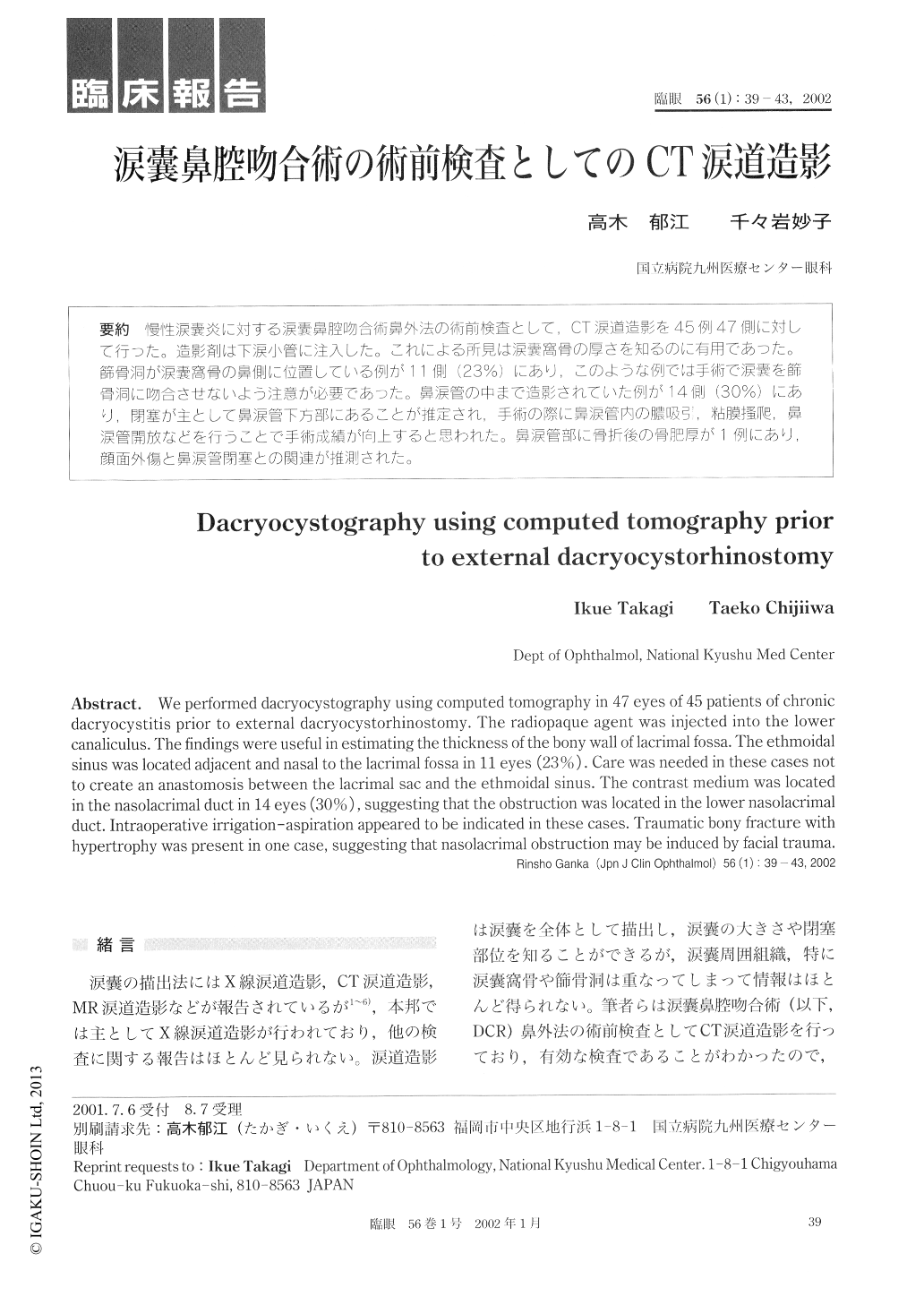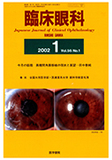Japanese
English
- 有料閲覧
- Abstract 文献概要
- 1ページ目 Look Inside
慢性涙嚢炎に対する涙嚢鼻腔吻合術鼻外法の術前検査として,CT涙道造影を45例47側に対して行った。造影剤は下涙小管に注入した。これによる所見は涙嚢窩骨の厚さを知るのに有用であった。篩骨洞が涙嚢窩骨の鼻側に位置している例が11側(23%)にあり,このような例では手術で涙嚢を篩骨洞に吻合させないよう注意が必要であつた。鼻涙管の中まで造影されていた例が14側(30%)にあり,閉塞が主として鼻涙管下方部にあることが推定され、手術の際に鼻涙管内の膿吸引,粘膜掻爬,鼻涙管開放などを行うことで手術成績が向上すると思われた。鼻涙管部に骨折後の骨肥厚が1例にあり,顔面外傷と鼻涙管閉塞との関連が推測された。
We performed dacryocystography using computed tomography in 47 eyes of 45 patients of chronic dacryocystitis prior to external dacryocystorhinostomy. The radiopaque agent was injected into the lower canaliculus. The findings were useful in estimating the thickness of the bony wall of lacrimal fossa. The ethmoidal sinus was located adjacent and nasal to the lacrimal fossa in 11 eyes (23%). Care was needed in these cases not to create an anastomosis between the lacrimal sac and the ethmoidal sinus. The contrast medium was located in the nasolacrimal duct in 14 eyes (30%), suggesting that the obstruction was located in the lower nasolacrimal duct. Intraoperative irrigation-aspiration appeared to be indicated in these cases. Traumatic bony fracture with hypertrophy was present in one case, suggesting that nasolacrimal obstruction may be induced by facial trauma.

Copyright © 2002, Igaku-Shoin Ltd. All rights reserved.


